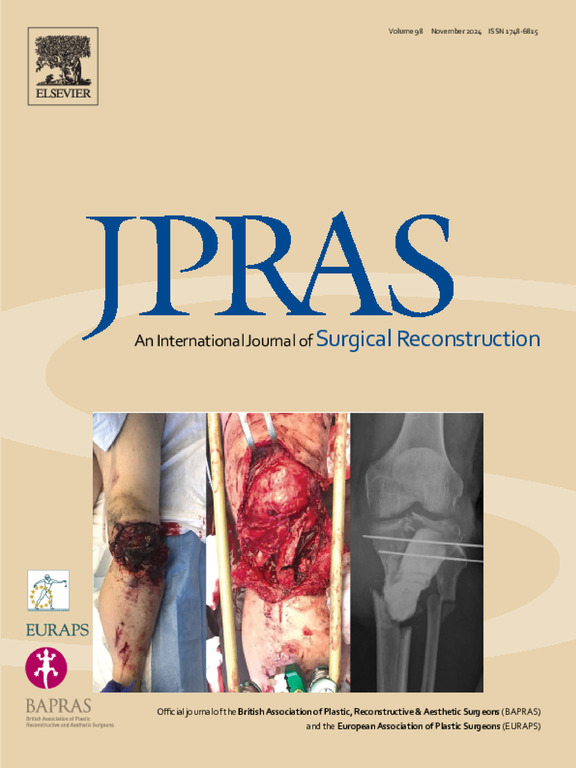Sustainability in breast surgery: An eco-audit of the breast implant pathway
IF 2
3区 医学
Q2 SURGERY
Journal of Plastic Reconstructive and Aesthetic Surgery
Pub Date : 2025-04-17
DOI:10.1016/j.bjps.2025.04.020
引用次数: 0
Abstract
Background
Breast implants are the most common type of breast reconstruction performed globally. However, despite the vast number performed annually, the environmental impact of the pathway has yet to be evaluated.
Methods
A retrospective analysis of 34 immediate breast implant reconstructions at a single reconstructive centre was performed. Process mapping and life-cycle analyses were performed for equipment, staff, patients, and land. A carbon dioxide equivalent was used to estimate the relative contributions of the initial consultation, preoperative, intraoperative, and immediate postoperative periods.
Results
This study estimated the carbon footprint of a patient undergoing immediate reconstructive breast implant surgery to be approximately 48.80 kgCO2eq. The majority of emissions came from the intraoperative period (28.58 kgCO2eq., 58.57%). Production and transport of surgical and anaesthetic equipment had the highest overall contribution to the carbon footprint (25.46 kgCO2eq., 52.17% overall). Patient travel was the second greatest contributor, closely followed by anaesthesia (18.28% and 16.60%, respectively).
Conclusions
This is the first study to estimate the carbon footprint of the breast implant pathway. Strategies to mitigate the impact of carbon emissions include the reuse of equipment. The impact of revisional procedures and future breast implant exchanges was not included and should be factored into future estimates of carbon footprint calculations.
乳房手术的可持续性:乳房植入途径的生态审计
背景乳房植入是全球范围内最常见的乳房重建手术。然而,尽管每年进行的数量庞大,但该通道的环境影响尚未得到评估。方法对34例在同一重建中心进行的乳房即刻植入重建进行回顾性分析。对设备、员工、患者和土地进行了流程映射和生命周期分析。二氧化碳当量用于估计初始咨询、术前、术中和术后立即的相对贡献。结果本研究估计,接受乳房重建手术的患者的碳足迹约为48.80 kgco2当量。大部分排放来自术中(28.58 kgCO2eq)。, 58.57%)。手术和麻醉设备的生产和运输对碳足迹的总体贡献最高(25.46 kgCO2eq)。占52.17%)。患者旅行是第二大因素,紧随其后的是麻醉(分别为18.28%和16.60%)。结论本研究首次估算了乳房植入途径的碳足迹。减轻碳排放影响的策略包括设备的再利用。修订程序和未来乳房植入物交换的影响不包括在内,应考虑到未来对碳足迹计算的估计。
本文章由计算机程序翻译,如有差异,请以英文原文为准。
求助全文
约1分钟内获得全文
求助全文
来源期刊
CiteScore
3.10
自引率
11.10%
发文量
578
审稿时长
3.5 months
期刊介绍:
JPRAS An International Journal of Surgical Reconstruction is one of the world''s leading international journals, covering all the reconstructive and aesthetic aspects of plastic surgery.
The journal presents the latest surgical procedures with audit and outcome studies of new and established techniques in plastic surgery including: cleft lip and palate and other heads and neck surgery, hand surgery, lower limb trauma, burns, skin cancer, breast surgery and aesthetic surgery.

 求助内容:
求助内容: 应助结果提醒方式:
应助结果提醒方式:


